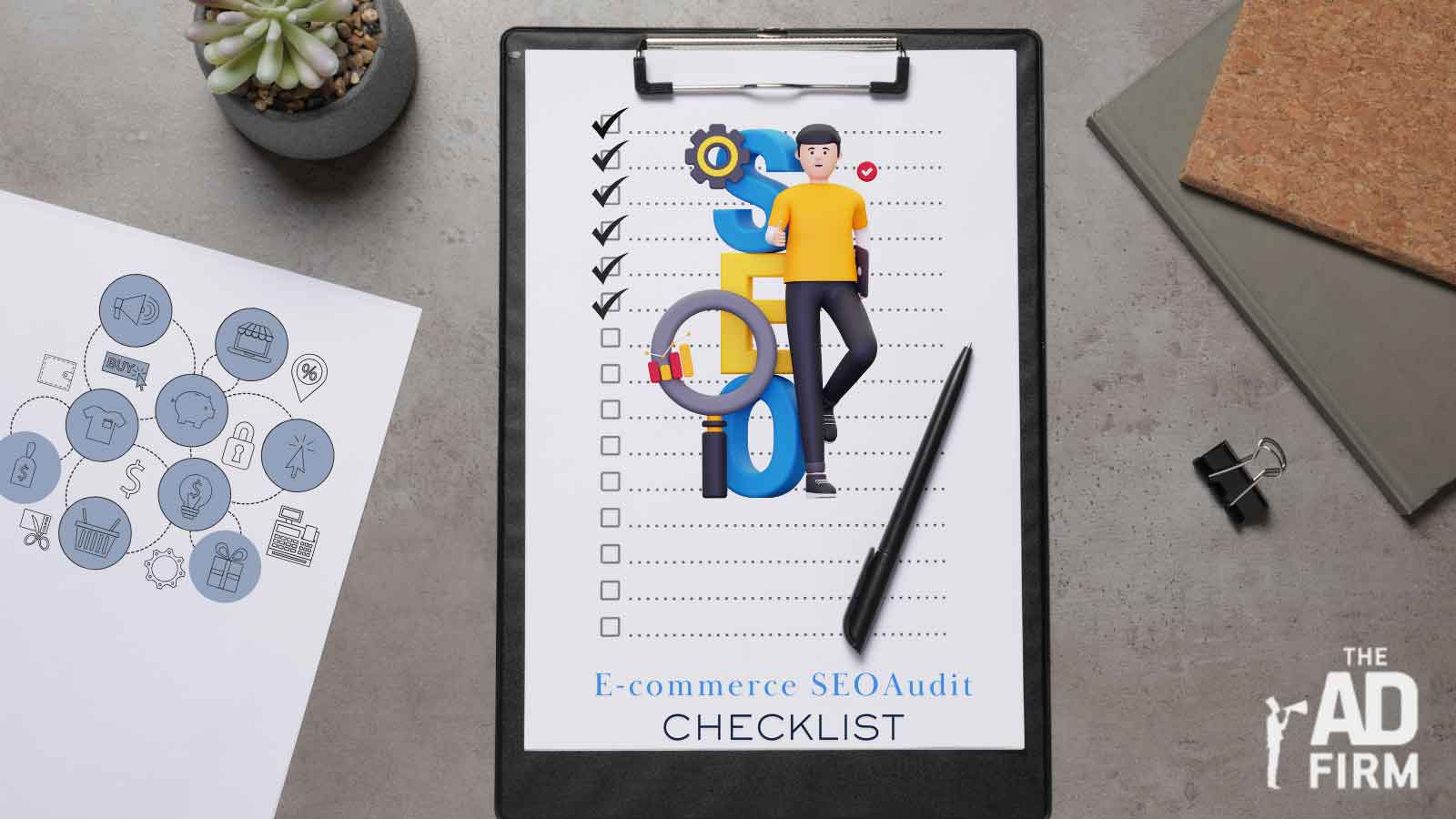A comprehensive ecommerce SEO audit is the cornerstone of a successful online store. It ensures your site is optimized for visibility, provides a seamless user experience, and attracts targeted traffic that converts. This actionable checklist highlights the critical areas to evaluate and optimize, empowering your store to achieve peak performance and stay ahead in competitive markets.
Technical SEO Assessment
Technical SEO is the backbone of any ecommerce SEO strategy. It ensures search engines can crawl and index your site efficiently while maintaining a seamless user experience. Addressing technical SEO issues early creates a solid foundation for boosting visibility and driving more traffic to your store.
Website Speed and Performance
Page load speed is a critical ranking factor, directly influencing both user satisfaction and conversion rates. A slow-loading website frustrates users and reduces your chances of ranking well in search results. Here’s how to optimize performance:
- Page Load Times: Ensure your site loads within 3 seconds. Research shows that every additional second of delay can result in a 7% drop in conversions.
- Optimization Tools: Leverage tools like Google PageSpeed Insights and GTmetrix to identify areas where performance lags. Address flagged issues such as render-blocking JavaScript, excessive redirects, or large image sizes.
- Image Compression: High-resolution images can significantly slow down your site. Image optimization tools like TinyPNG or ShortPixel can be used to reduce file size without sacrificing quality. This approach ensures your site looks excellent while maintaining fast speeds.
- CDNs and Hosting: Partner with a content delivery network (CDN) to distribute site content across multiple servers, reducing latency. Also, choose a hosting provider offering high uptime and scalable server resources to handle traffic spikes efficiently.
A faster site improves rankings and enhances user experience, creating a smoother path from product discovery to checkout.
Mobile-Friendliness and Responsiveness
With mobile devices driving over half of global web traffic, optimizing for mobile users is non-negotiable. Google’s mobile-first indexing means your site’s mobile experience is now a primary determinant of its search ranking.
- Responsive Design: A responsive design automatically adjusts your site layout to fit any screen size, providing a consistent experience across devices. Test responsiveness on platforms like BrowserStack or Responsinator to ensure seamless functionality.
- Mobile-Friendly Test: Use Google’s Mobile-Friendly Test to evaluate your site’s mobile usability. This tool identifies issues like text readability, touch element spacing, and viewport configuration.
- Touch-Friendly Elements: Mobile users rely on touch interactions, making it essential to optimize buttons, menus, and forms for effortless navigation. Use larger buttons and ensure ample spacing between clickable elements to avoid accidental taps.
- Viewport Optimization: Configure the viewport meta tag to ensure your site scales appropriately across screen sizes. Avoid fixed-width designs that may distort layouts on smaller devices.
A mobile-optimized site caters to user preferences and signals search engines that your store is ready for mobile-first indexing. By enhancing responsiveness, you improve both rankings and user satisfaction.
Keyword Research and On-Page Optimization

Keyword research forms the foundation of SEO for eCommerce, ensuring your site aligns with user search intent. You can increase visibility, drive relevant traffic, and enhance the overall user experience by targeting the right keywords and optimizing your content accordingly. Effective on-page optimization ensures search engines and potential customers find value in your content.
Keyword Targeting and Placement
Keyword targeting is crucial for helping search engines understand your content while catering to your audience’s needs. Proper placement ensures your pages rank for relevant queries without compromising readability.
- Primary and Secondary Keywords: Strategically incorporate both primary and secondary keywords into essential areas such as page titles, meta descriptions, headings, and body text. For example, integrating terms like “ecommerce SEO services“ in your title and descriptions ensures higher relevance.
- Keyword Placement: To signal your primary keyword’s importance to search engines, place it within the first 100 words of your content. Then, spread additional keywords naturally across the text, including subheadings, bullet points, and image alt tags.
- Avoid Keyword Stuffing: Overusing keywords can harm your rankings and disrupt the flow of your content. Focus on maintaining balance by writing naturally and ensuring each keyword fits contextually within the content. This approach keeps readers engaged and improves SEO performance.
By targeting and placing keywords effectively, you bridge the gap between user intent and search engine requirements, creating content that ranks well and engages visitors.
Content Quality and Optimization
High-quality content is the backbone of successful ecommerce SEO services, offering both value to users and improved rankings. Your content should be informative, engaging, and optimized for search visibility.
- Product Descriptions: Unique and descriptive product pages can set your store apart. Avoid copying manufacturer descriptions, as duplicate content can hurt your rankings. Instead, craft engaging descriptions that highlight product benefits, use cases, and specifications. Incorporating relevant keywords, such as “Shopify SEO services“, ensures search engines recognize the content’s relevance.
- Schema Markup: Implement structured data to help search engines better understand your content and display rich snippets in search engine results pages (SERPs). Features like star ratings, pricing, and availability can enhance your listings and attract more clicks.
- Blog Content: A well-maintained blog is a powerful tool for targeting long-tail keywords. Create in-depth, keyword-optimized blog posts that address user questions, showcase expertise, and drive organic traffic.
Focusing on keyword optimization and content quality can help your site effectively engage users and establish authority in your niche. These strategies ensure your eCommerce platform stays competitive while delivering a seamless experience for both users and search engines.
Site Structure and Navigation
A well-structured website is essential for both user experience and search engine optimization. Visitors are more likely to engage and convert when your site is easy to navigate, while search engines can efficiently crawl and index your pages. Prioritizing a precise, organized structure ensures seamless navigation and boosts your rankings on SERPs.
URL Hierarchy and Internal Linking
Organizing your URLs and implementing a strategic internal linking system is foundational for effective ecommerce SEO. These elements guide users through your site while helping search engines understand its structure.
- Simple and Relevant URLs: Keep URLs concise, descriptive, and keyword-rich. For example, “/shop/mens-shoes” is far more effective than a long string of irrelevant characters. Incorporating keywords like “seo ecommerce” in URLs can further optimize your pages for search engines.
- Contextual Links in Content: Instead of relying solely on product-to-category linking, embed relevant links within product descriptions or blog content. Linking to related products or key landing pages ensures a seamless user journey and strengthens site authority.
- Canonical Tags: Use canonical tags to address duplicate content issues, especially if you have multiple versions of the same product page (e.g., with different color or size options). This ensures search engines recognize the primary version and avoid penalizing your site for redundancy.
A clear URL hierarchy combined with strategic internal linking creates an organized site structure that is both user-friendly and SEO-optimized.
Breadcrumbs and User Pathways
Breadcrumb navigation improves user experience by showing visitors exactly where they are on your site. It reduces bounce rates and encourages users to explore additional pages.
- Implement Breadcrumbs: Add breadcrumbs to important pages, including product, category, and checkout pages. These clickable trails allow users to retrace their steps and discover more content quickly.
- Logical Pathways: Design intuitive pathways that guide users seamlessly from product discovery to checkout. For example, a path such as “Home > Shop > Men’s Shoes > Running Shoes” ensures clarity and simplifies the shopping experience.
- SEO Benefits of Breadcrumbs: Breadcrumbs enhance user navigation and improve your site’s appearance in search results, providing structured navigation data to search engines.
A logical and accessible site structure encourages users to stay longer, explore more, and ultimately convert. Additionally, it strengthens your ecommerce SEO strategy, ensuring your site ranks higher and remains competitive.
Backlink Profile and Domain Authority

A robust backlink profile is critical for improving your domain authority, which directly impacts your rankings in competitive ecommerce SEO niches. Acquiring high-quality backlinks and managing your existing profile can build trust with search engines and drive sustained organic traffic.
Backlink Analysis
Regularly analyzing your backlinks is essential for maintaining a healthy profile and ensuring consistent SEO performance. This helps you identify valuable links and weed out potentially harmful ones.
- Quality Over Quantity: Focus on backlinks from authoritative and industry-relevant websites. For example, a link from a trusted ecommerce SEO agency or a niche-specific blog carries significantly more weight than dozens of low-quality links.
- Disavow Toxic Links: Use tools like Google Search Console to detect and disavow spammy or harmful backlinks that could lower your rankings.
- Competitor Analysis: Leverage tools like Ahrefs or SEMrush to study your competitors’ backlink strategies. Identify their high-value link sources and explore similar opportunities for your site.
A clean and credible backlink profile strengthens your site’s reputation and enhances your authority in search engine algorithms.
Building Authoritative Links
Acquiring authoritative backlinks is a long-term strategy that directly impacts your domain authority and boosts search engine trust. Prioritize strategies that align with your brand’s expertise and target audience.
- Guest Posting: Write high-quality, valuable content for authoritative blogs in your industry. This earns you backlinks and positions your business as a thought leader.
- Partner Links: Collaborate with complementary businesses for cross-promotional linking. For example, if you sell eco-friendly products, partner with blogs or marketplaces that specialize in sustainability.
- Resource Pages: Reach out to websites with curated resource pages in your niche and pitch your content as a valuable addition. For example, a well-researched guide on SEO for ecommerce could be a strong contender for inclusion on digital marketing resource pages.
These strategies ensure you build a strong network of relevant and high-quality backlinks, helping your site maintain authority and visibility.
Conversion Rate and User Experience (UX)
User experience (UX) is a key determinant of eCommerce success. A well-optimized UX enhances customer satisfaction and drives higher conversion rates. You can minimize friction and encourage more purchases by focusing on usability and customer engagement.
User Behavior Metrics
Monitoring user behavior metrics provides insights into how visitors interact with your site. This data helps identify bottlenecks and optimization opportunities to improve the overall shopping experience.
- Bounce Rate and Session Duration: Use Google Analytics to track engagement metrics, such as how long users stay on your site and which pages they leave quickly. High bounce rates often indicate poor UX or irrelevant content.
- Heatmaps: Tools like Hotjar or Crazy Egg reveal user behavior on specific pages. Analyze where users click, scroll, and drop off to better understand pain points in their journey.
- Conversion Paths: Evaluate the steps users take before completing a purchase. Identify areas of friction, such as overly complex navigation or confusing product pages, and implement fixes to streamline the process.
User behavior metrics act as a roadmap, guiding you to make informed decisions that improve engagement and conversions.
Checkout Process Optimization
The checkout process is a critical stage in the customer journey. Any inefficiencies here can lead to cart abandonment, negatively impacting your revenue.
- Simplified Steps: Reduce the number of steps in your checkout process. For example, use a single-page checkout layout that consolidates all necessary information, minimizing friction.
- Payment Options: To accommodate diverse customer preferences, offer multiple secure payment gateways, such as PayPal, Apple Pay, and credit cards.
- Call-to-Actions (CTAs): Ensure your CTAs are clear, prominent, and persuasive. For example, use actionable phrases like “Complete Your Order” or “Buy Now” to encourage conversions.
An optimized checkout process ensures customers complete their purchases effortlessly, improving both satisfaction and sales.
The Importance of Regular Ecommerce SEO Audits
Consistent SEO audits are vital for maintaining your store’s visibility and performance. This checklist provides a structured approach to optimizing key areas that influence search rankings and user engagement.
Partner with The Ad Firm for professional SEO services tailored to your eCommerce business. Our team specializes in eCommerce SEO services, delivering measurable results through comprehensive audits and targeted strategies. Contact The Ad Firm today to elevate your store’s performance and stay ahead of the competition.









